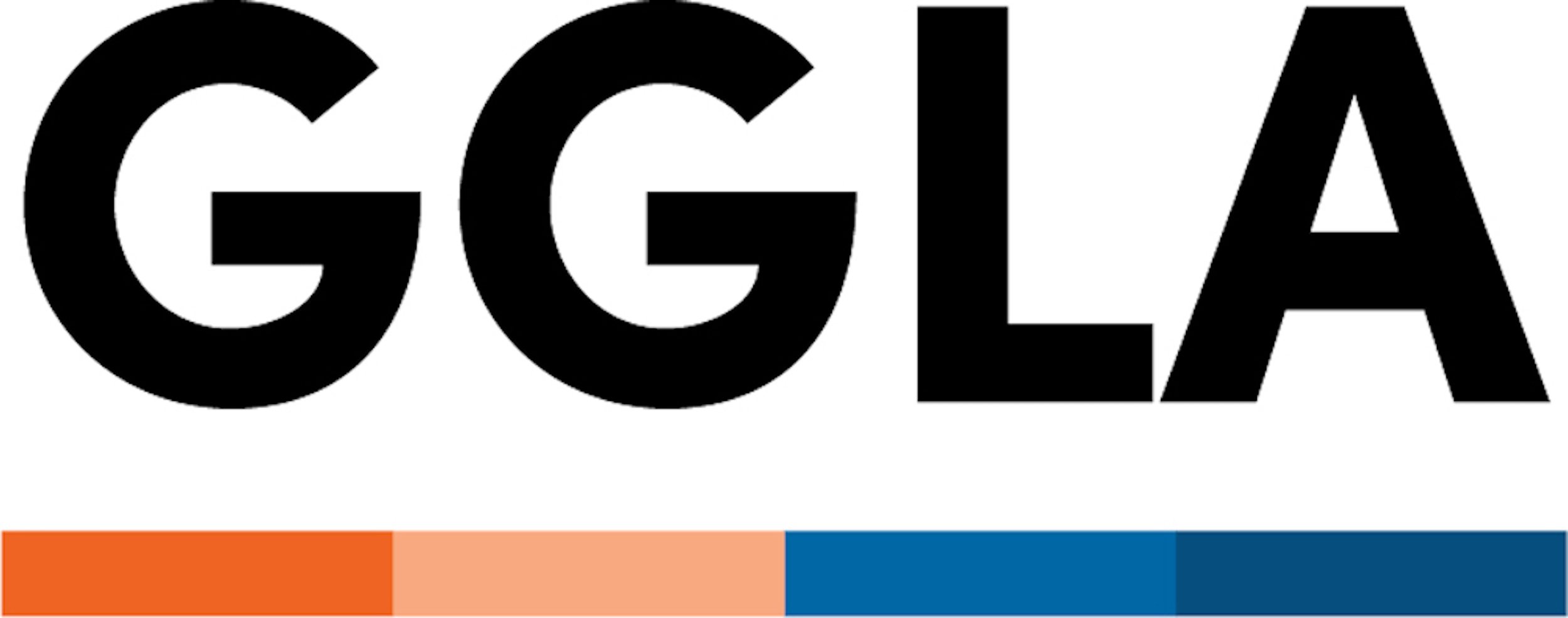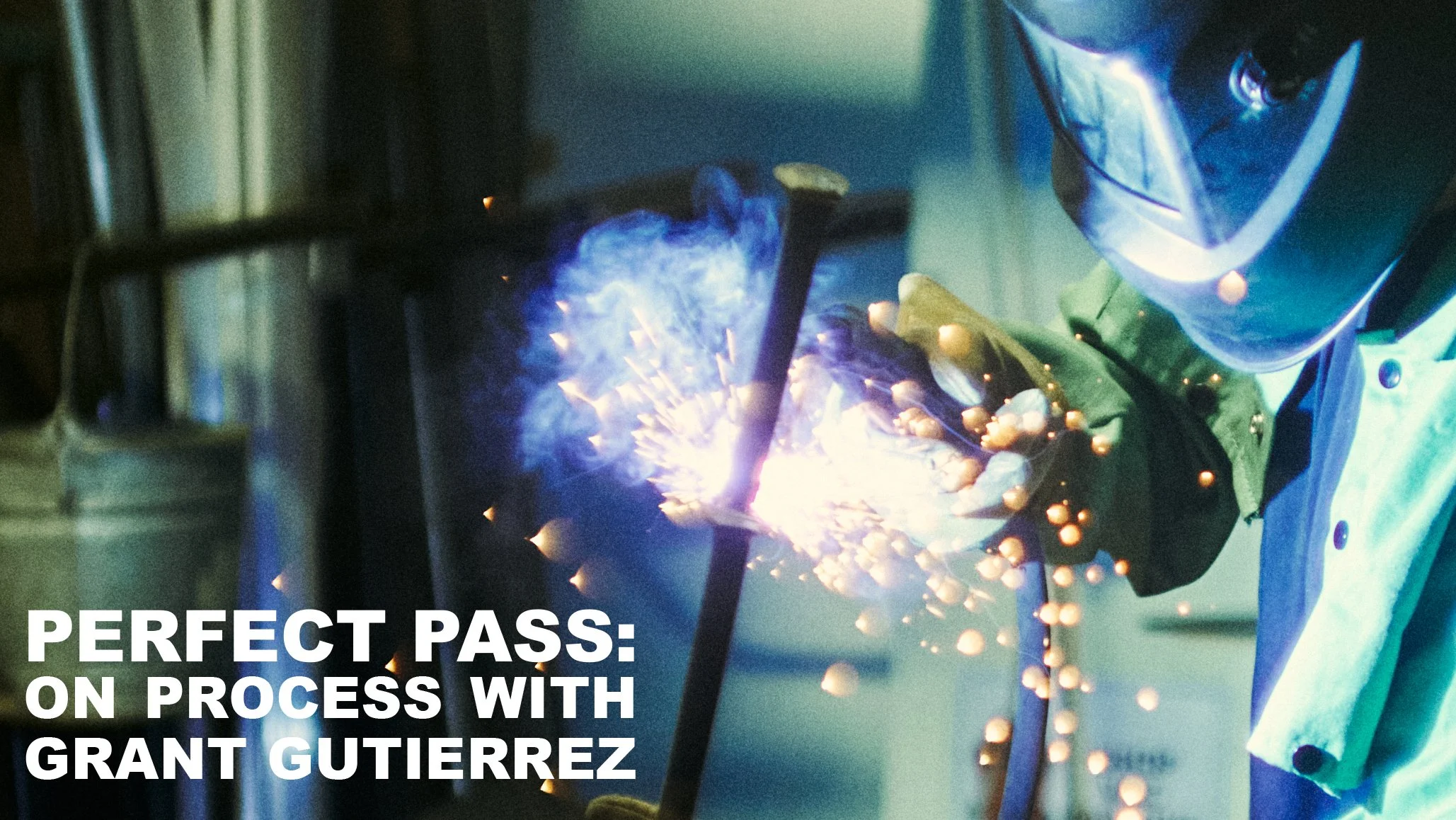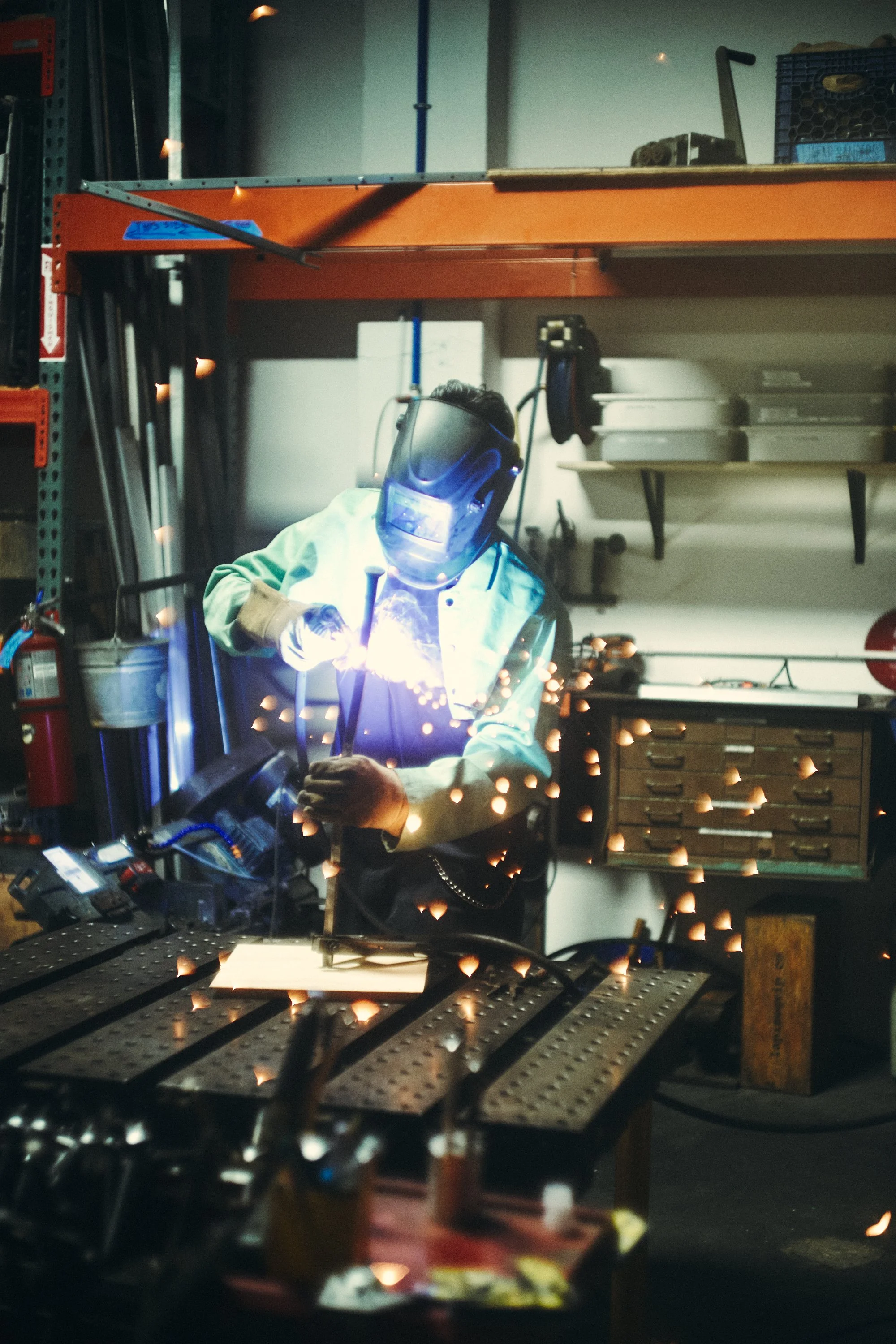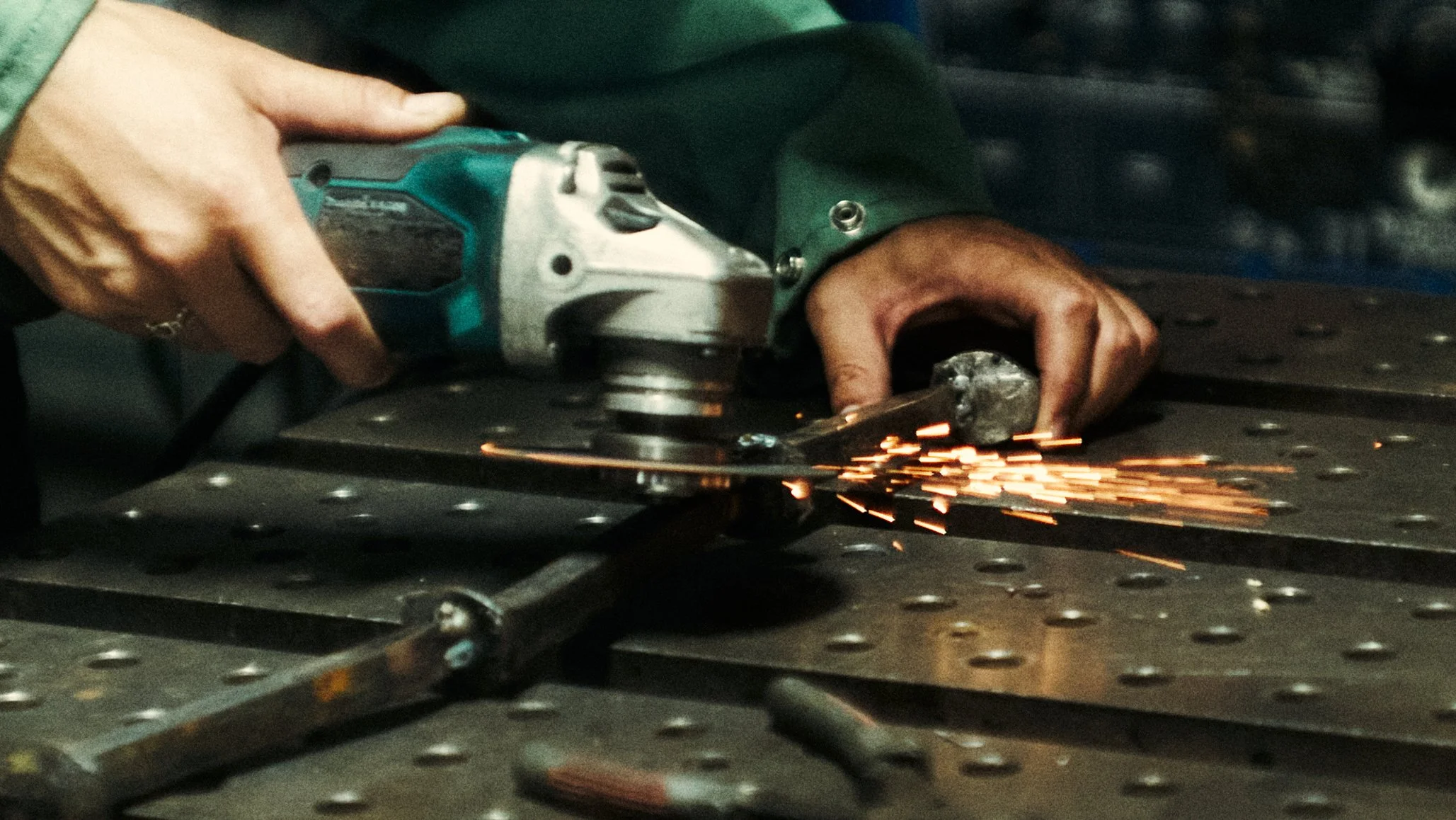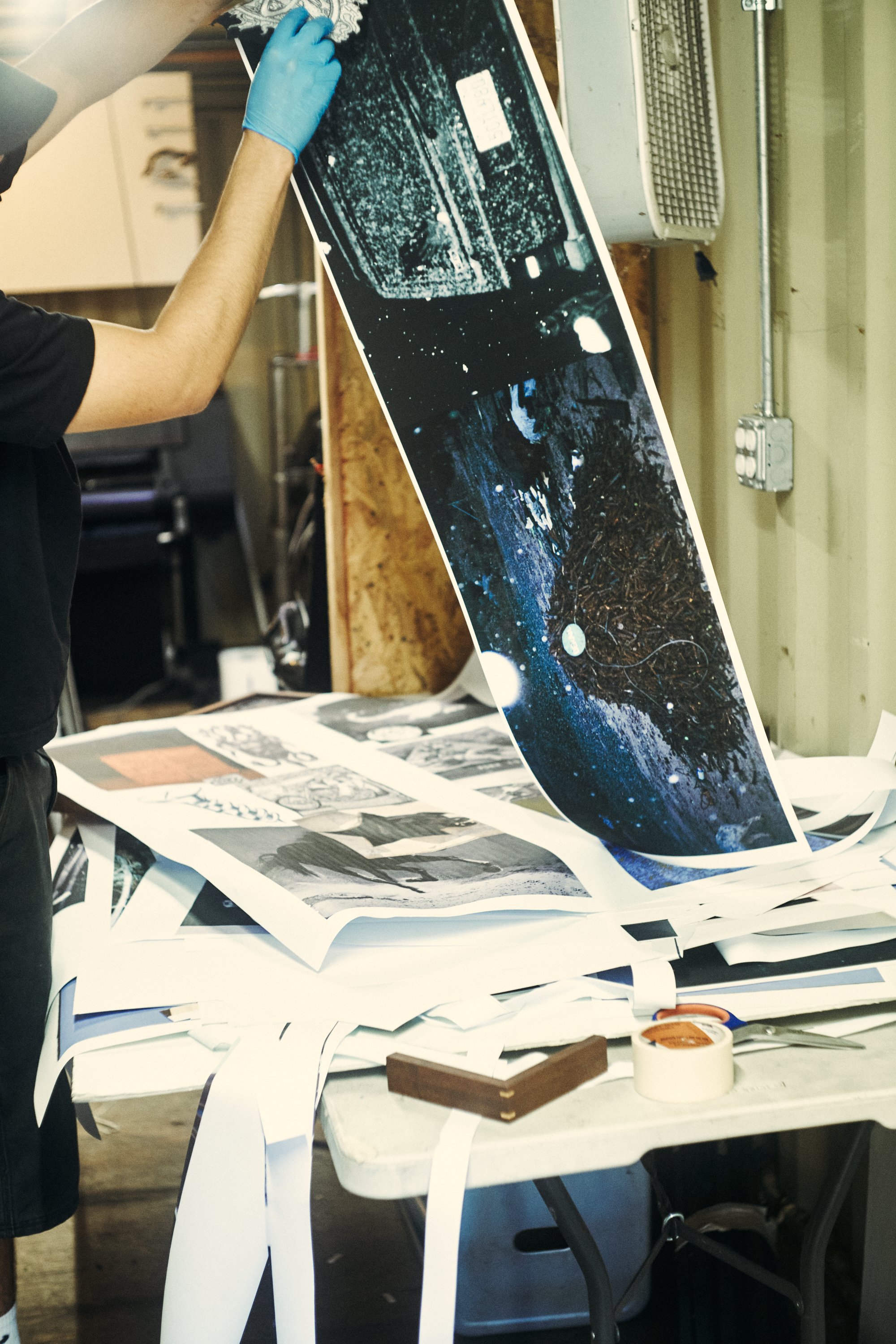Grant Gutierrez Interview
Perfect Pass | Solo Exhibition by Grant Gutierrez
Opening Reception: Saturday, August 2nd, 6-9 PM
Exhibition dates: August 2nd - August 30th, 2025
GGLA is proud to present Perfect Pass, a solo exhibition by Los Angeles based artist Grant Gutierrez, his first with the gallery. Taking inspiration from Cajon Pass, a legendary and oftentimes infamous mountain pass that connects the Mojave Desert to the Los Angeles Basin, Gutierrez ruminates on this desolate yet multifaceted area through a mixed media approach that combines photography and sculpture with printed textiles, welding and embroidery.
Having grown up close to this area, Gutierrez began shooting photos around the pass as a teenager, later learning how to catch and ride freight trains from there, and returning over the years on motorcycle trips, or to better understand the area and the people that move through it. Through framed photos that depict travelers existing within or passing through this harsh climate via freight train, to a sculpture made from railroad ties that speaks to industry and movement through the pass in a different way, to printed and embroidered textile works and a welded sissy bar mounted into the floor of the gallery that speaks to the aesthetics and creativity in custom motorcycle culture and its ties to this area–Perfect Pass is as much a depiction of the storied Cajon Pass as it is a metaphorical exploration of place in all its layered histories and contemporary exploits.
GGLA: What are some of your favorite ways the multiple mediums you use interact with each other within a piece?
My favorite thing is that you can use everything and anything if you really want to. The type of resources we have nowadays, anything applies or can be applied. You can blend every certain type of medium in your way: wood, metal, photography, and embroidery. Right now, I’m using what I can access in my shop/ business. I would love to dive deeper into different materials and narrow down certain mediums I like to produce with.
It’s all about: “Why not? Fuck it let’s try it.”
GGLA: When did your relationship with motorcycle culture begin, and when did it begin to influence your approach to your art?
I bought my first motorcycle in San Francisco after I finally got a somewhat real job after graduating from SFAI. I’ve always wanted a motorcycle my entire life. All my friends or extended family used to go out to the desert like Glamis and ride quads and dirt bikes. Their dad‘s and friends would all have motorcycles or some type of Roadster or be involved in some type of motorsport. Personally, my family wasn’t interested in those types of things when I was a kid. That wasn’t what they were brought up with, also was financially too expensive. I always tried to hop on to a friend’s trip if I was invited and it was always a great time because it was something I was never allowed to do, or had access to do like a lot of other kids around me. My great grandfather used to ride his motorcycle from Los Angeles to San Francisco when he was around my age, and that also was very inspiring because he is one of the main artists in my family. He drew for the Los Angeles Times as one of their main illustrators and cartoonists for 50 years. My first bike was a Harley and I was instantly gravitated toward it. I wanted to customize it after the first hour of buying it. I always knew about West Coast choppers and all that type of stuff on TV, but I started meeting new people in the motorcycle and “chopper” scene through art and skateboarding. Seeing what type of builds they were doing- I got pretty inspired doing that and haven’t stopped since. I always liked how skateboarding and specifically choppers coincided on commitment and continuous mistakes until you get the final product.
GGLA: What parallels are there between a place like Cajon Pass and your practice as an artist, where so many forces and lanes seem to intersect?
The parallels from the Cajon pass and my type of work is a philosophy of doing what I can, with whatever I have, when I have it. It’s the same as any other nomad, traveler, resident, trucker, outlaw, crust punk, etc. Predicting the next forecast or travelling to the other side of the mountain / rail line. You know- Jim Morrison, “Break on through to the other side”. Mentally and physically exploring the unknown.
GGLA: What is it like to be an additional participant in a place with so much history, and to experience Cajon Pass today while understanding how much has happened in the last hundred years?
I am just another person throughout history to pass through. In the early 1800’s, the pass was used heavily for horse smuggling and Spanish army deserters. One of the largest horse raids known to man used the pass as one of the corridors to make their escape. It was said that the dust of the 3,000 galloping horses could be seen for 50 miles as they raced across the dry desert plains. Before this, Native Americans used this area for trade and bartering between villages. This act still happens today, along with constant motorized locomotion. My practice parallels the constant movement that is more present today. There’s many times I can’t focus on one project at a time and it’s really hard for me to narrow things down. I use a lot of different types of mediums, and experience many paths to get to the final product that I want to make. The many lanes and forces intersecting within this space mirrors my personal process into making my work.
GGLA: In your exploration of these subcultures that influence the work, what misconceptions have you come across between motorcycle culture, railfan communities, and motor engineering?
A few misconceptions would be that everyone there is up to no good. Sometimes travelers are there to get to the next step of life without being a menace to society. Not every motorcyclist is a 1%er, and not every train hopper is a terrible person. Yes, a lot of intense and negative history has happened through the Pass, but that doesn’t sum everyone up. I have come across people who seemed very questionable, but were just looking to change their future or survive as an asset to society. The Cajon Pass is used 24/7, continuously moving trains, motorcycles, automobiles, and cyclists.
GGLA: What motivates you to incorporate certain icons within your work, and how do you go about your selection process with these more recognizable symbols?
I include certain icons and symbols in my work about this area because of what I have experienced there. The types of people, locomotives, brands, and history...since I grew up close to this area, I reflect on my cultural upbringing. I started shooting this place in my late teenage years, and I also learned how to catch out and hop freight trains here as well. It’s just been one of those places that has been nearly desolate, no one really goes there unless you have a certain type of connection or mischief intention. There’s absolutely no reason to go there unless you’re passing through, squatting a certain space, or trying to catch out on a certain line to get out of Southern California. The Cajon pass has a range of of elements, and I would say my work has a lot of range as well; I don’t like to stick to one thing. I often lose interest and want to move onto something else. I like to move beyond the known and explore the unknown, whether that’s a new level of understanding, a new experience, or a different perspective. The pass also taught me about different styles and times of a place. You can photograph the same subject in a different season, and it looks completely different and draws a completely different crowd. I like to note the movement and constant locomotives within this space through many parts of my work. Exploration helps me find interesting mediums. This imagery is based on the type of culture and history known within this place. It is intriguing to me, and desolation is always something that I have been drawn to.
